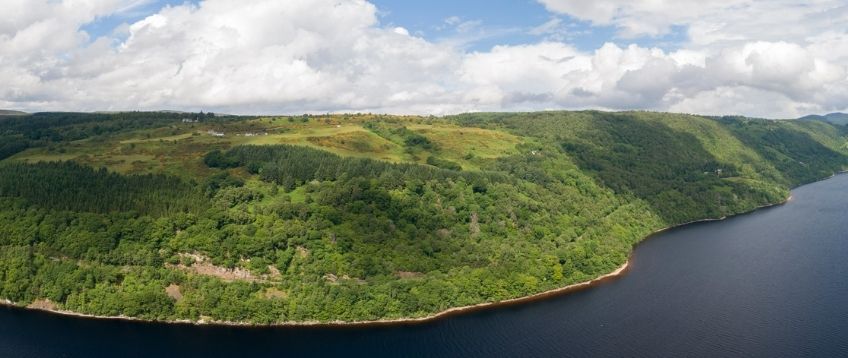Soil eDNA data forms part of world-leading research for Highlands Rewilding
Discovering a rich landscape of fungi and soil fauna for a best-practice rewilding project in Loch Ness, Scotland


Project Snapshot
Overview
We worked on a three-month feasibility study funded through Innovate UK’s Sustainable Innovation Fund to assist Highlands Rewilding – a new company founded by eco-entrepreneur Jeremy Leggett – to map soil fauna and fungi across the 511-hectare Bunloit estate on the shores of Loch Ness in Scotland.
Highlands Rewilding aims to be one of the world’s most impactful accelerators of Nature-based Solutions (NbS) implementation, with the site aiming to become a beacon of hope in addressing the dual challenges of climate change and biodiversity loss. Restoration and rewilding practices implemented across the estate will enable species and ecosystem recovery, which in turn delivers carbon sequestration and community prosperity.
In this pilot, we worked with Ecosulis as part of the CreditNATURE project. Our eDNA Soil and Sediments service provided a rich bank of data, demonstrating the power of this approach for establishing biological baselines against which progress can be measured and interventions planned going forward.
What the Client Says


The Challenge
Meaningful Assessment of Ecosystems
A range of detailed metrics needs to be evaluated on an annual basis to assess the impact of management on achieving ecosystem recovery and delivering against biodiversity and carbon sequestration goals.
Soil biodiversity is directly linked to ecosystem function, making it a critical component of natural capital and a powerful indicator of ecosystem health. eDNA was identified as an efficient and costeffective way of creating a baseline against which to monitor progress.
Our Role
Cutting-Edge Technologies for Real-World Data
The CreditNature project aimed to integrate a range of cutting-edge technologies to create a data-driven platform to enable the development of carbon, biodiversity and rewilding (ecosystem recovery) credits.
The Highlands team used NatureMetrics kits to gather 40 soil samples across the 511-hectare estate, covering all of its representative habitats. DNA was extracted from the soil samples and sequenced for fungi and soil fauna to characterise the communities present. Diversity metrics were generated from the species lists to compare diversity among different habitat types and assess correlations with factors such as soil carbon and nitrogen.





The Findings
1,168 fungal operational taxonomic units (OTUs) and 352 faunal OTUs were detected across the 40 samples.
Although limited by the small number of samples collected in each habitat, the eDNA analysis showed that:
- Coniferous woodlands have the lowest richness and diversity of both soil fauna and fungi
- The estate’s peatlands and grasslands have the highest and most distinct soil biodiversity
- Two of the detected fungal taxa matched to sequences of near-threatened species on the IUCN Red List although there are no known records of these species in Scotland. This data could be used to pinpoint areas for further investigation to establish whether those particular species are indeed present at the site
- Communities of both fungi and soil fauna were significantly associated with concentrations of soil organic carbon and total nitrogen, but not pH
The Impact
A Multihabitat Baseline
Analysis of the 40 soil samples revealed 1,168 species of fungi and 352 species of soil fauna. Interestingly, the data showed that soil fauna was most diverse in the peat bog habitat, which is often considered to be of low biodiversity value. Peat bog communities were also highly distinct from those in other habitat types, supporting a unique assemblage of species.
This dataset provides a good baseline of soil communities against which to assess the impact of restoration and rewilding measures implemented at the site. This will help the estate managers to make more informed decisions regarding their management plans.
NatureMetrics presented its insights on the Bunloit Estate at COP26 in Glasgow alongside other innovative technology providers (AgriCarbon, CSX Carbon & Terra Motion) following publication of the Natural Capital Report. We will continue to work together to provide long-term monitoring at the estate.
Make your nature strategy your USP
Explore more success stories
Join more than
500 companies
in 104 countries
Stay in the know with the latest nature-related news
Join 9,000 subscribers for monthly round-ups and analysis of nature-related news and insights from NatureMetrics






.jpg)








.png)


.jpg)

















.jpg)













